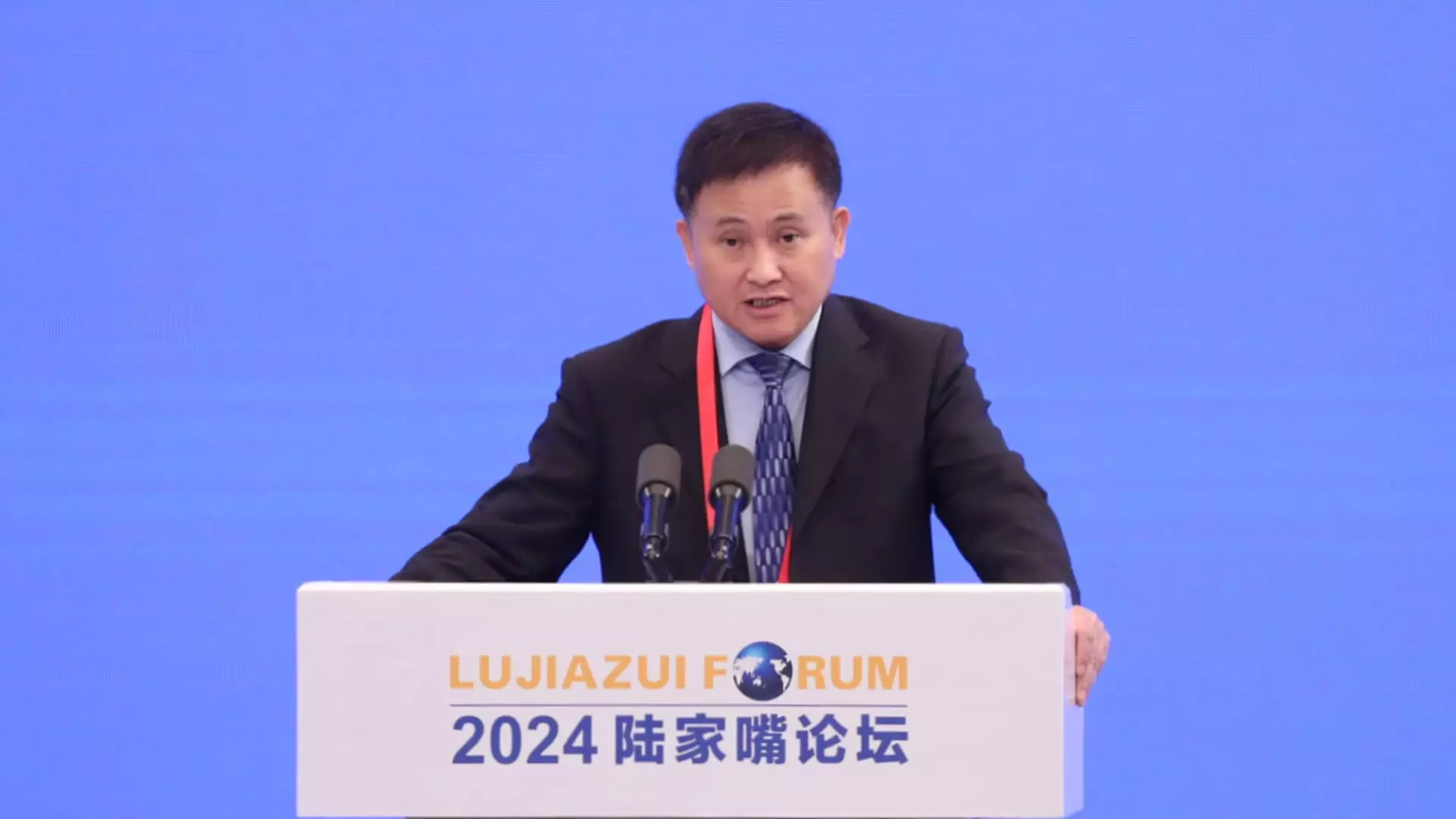China’s economic landscape is undergoing significant transformation as the People’s Bank of China (PBOC) gears up for crucial monetary policy adjustments. The recent announcement by PBOC Governor Pan Gongsheng highlighted the impending cut in the reserve requirement ratio (RRR) by 50 basis points, an action aimed at stimulating economic activity in an uncertain financial climate. This decision is part of a broader strategy to shore up growth amid deflationary pressures, and it reveals much about the underlying dynamics of China’s monetary policy.
The RRR is a key tool that the PBOC employs to regulate the amount of cash that banks must hold in reserve. By lowering the RRR, banks are allowed to free up additional funds, which can be directed toward lending activities. Pan referenced a continuous evaluation of economic conditions, suggesting that further cuts, possibly ranging between 0.25 to 0.5 basis points by the year’s end, may be forthcoming. Such actions reflect the PBOC’s commitment to enhancing liquidity in a sluggish economy, where high debts in the real estate sector and waning consumer confidence pose persistent challenges.
The potential impact of these adjustments cannot be understated. With a more favorable liquidity environment, businesses may experience improved access to credit, which can spur investment and consumption—a critical driving force for any economy. This approach appears to be part of a well-rounded response strategy, particularly in light of external factors, such as recent interest rate cuts by the U.S. Federal Reserve that have rippled across the globe.
Besides the anticipated RRR reduction, Pan also indicated a cut in the 7-day repo rate by 0.2 percentage points. This rate change signals the central bank’s willingness to adjust short-term borrowing costs to align with broader monetary policy goals. The direction of the 7-day repo rate is particularly noteworthy, as it plays a central role in influencing the cost of liquidity for financial institutions.
In contrast to the Fed’s focus on a singular main interest rate, the PBOC employs a multifaceted approach, utilizing various interest rates to orchestrate its monetary policy effectively. Notably, Pan’s mention of the loan prime rate, which directly impacts corporate and household borrowing costs, highlights the complexity of monetary policy management in China. The ambiguity around the timing and extent of these changes illustrates the cautious nature of the PBOC as it navigates a delicate economic landscape.
Despite this optimistic approach to monetary easing, the backdrop of China’s economic environment raises questions regarding the efficacy of such measures. The country’s growth has been hindered by a notable slump in the real estate sector and declining consumer trust, which has led many economists to beckon for more robust stimulus measures. With the PBOC maintaining status quo on the loan prime rate in the wake of the Fed’s adjustments, there’s palpable tension regarding the optimal path forward for the Chinese economy.
Moreover, the interconnectedness of China’s financial decisions on a global scale cannot be ignored. As major economies recalibrate their monetary policies, any substantive changes may exacerbate existing vulnerabilities within China’s financial system. The dichotomy of external pressure combined with domestic economic woes poses a significant challenge for the PBOC’s policymakers, necessitating a balance between controlling inflation and promoting growth.
The PBOC’s anticipated cuts to the RRR and potential adjustments to the repo rate and loan prime rates indicate a strategic response to emerging economic challenges. Governor Pan’s press conference laid bare the complexities and adaptive measures the central bank intends to undertake. As the PBOC navigates these pressing economic concerns, the outcomes of these policies will play a critical role in shaping not only China’s economic trajectory but also its position within the global economic framework. Anyone monitoring these developments should pay close attention to how these policy changes unfold in the coming months, as they hold significant implications for both local and international markets.

Leave a Reply